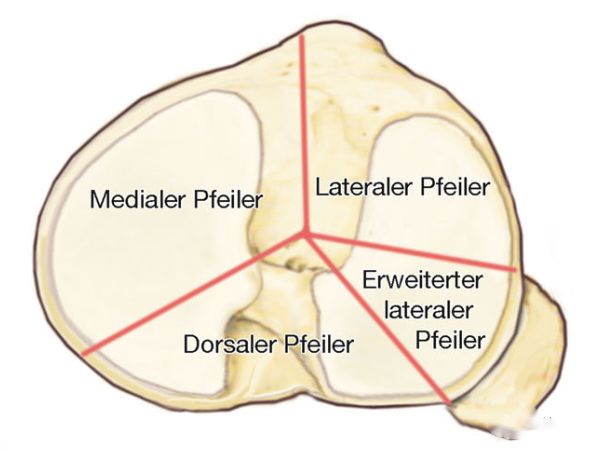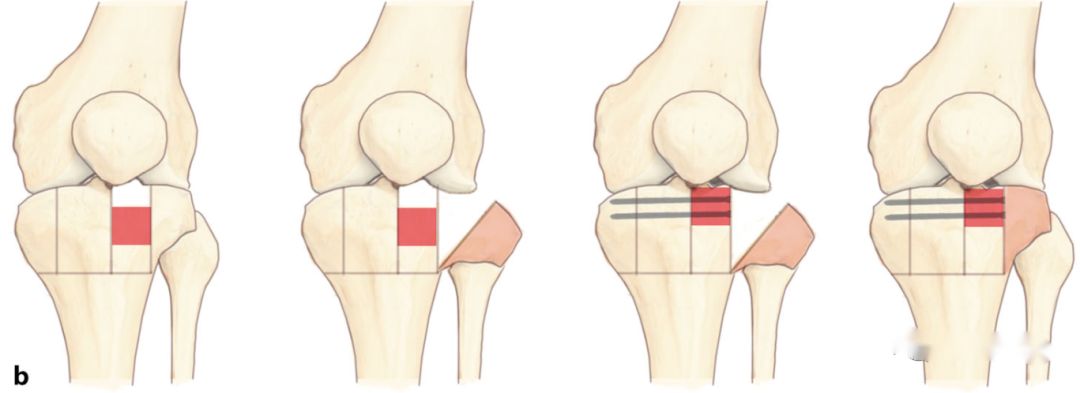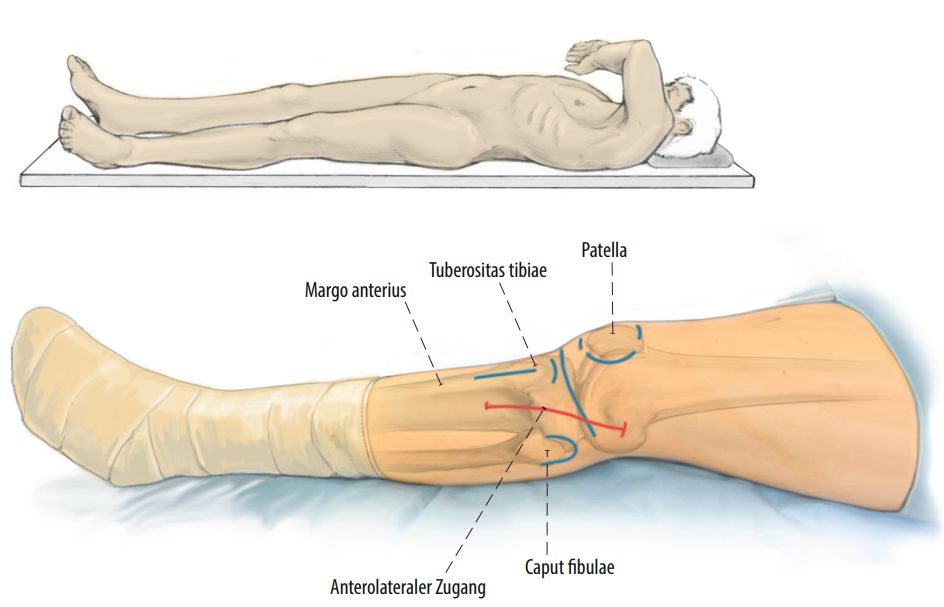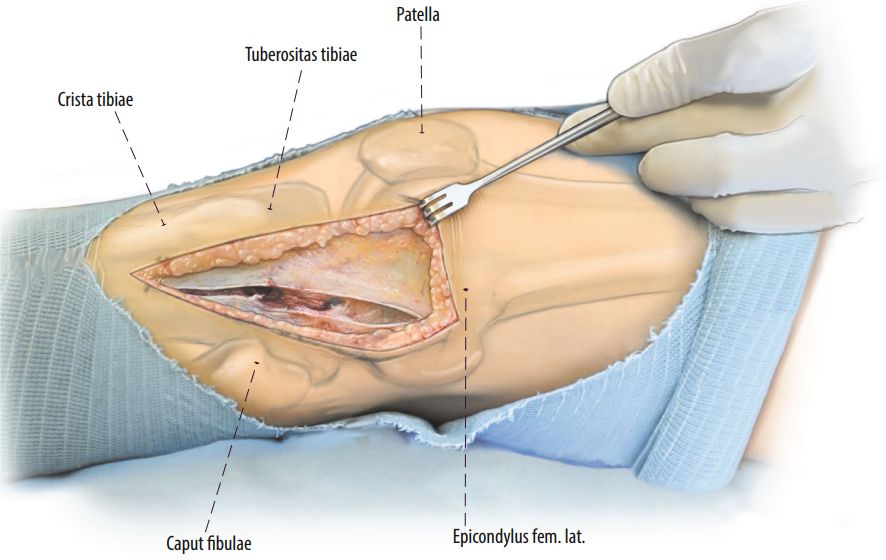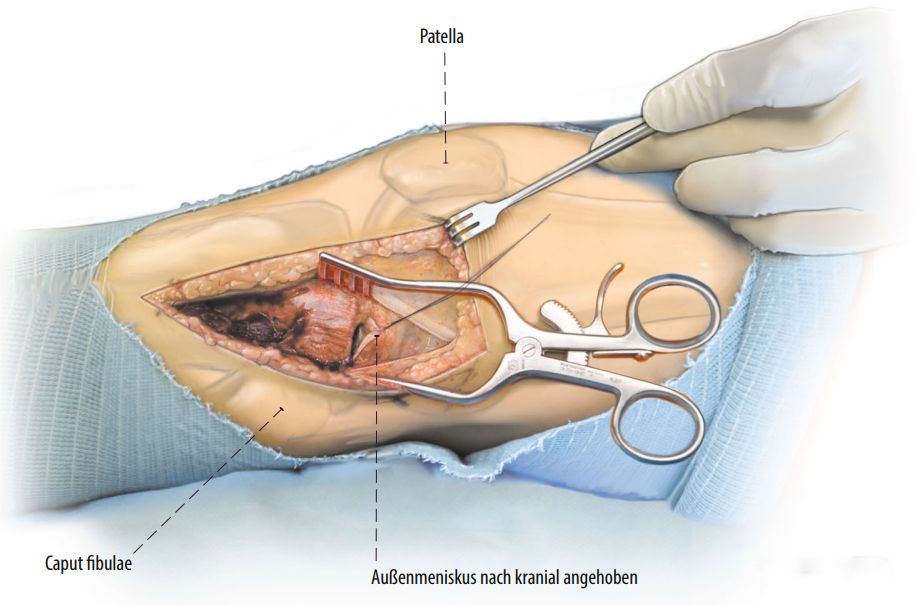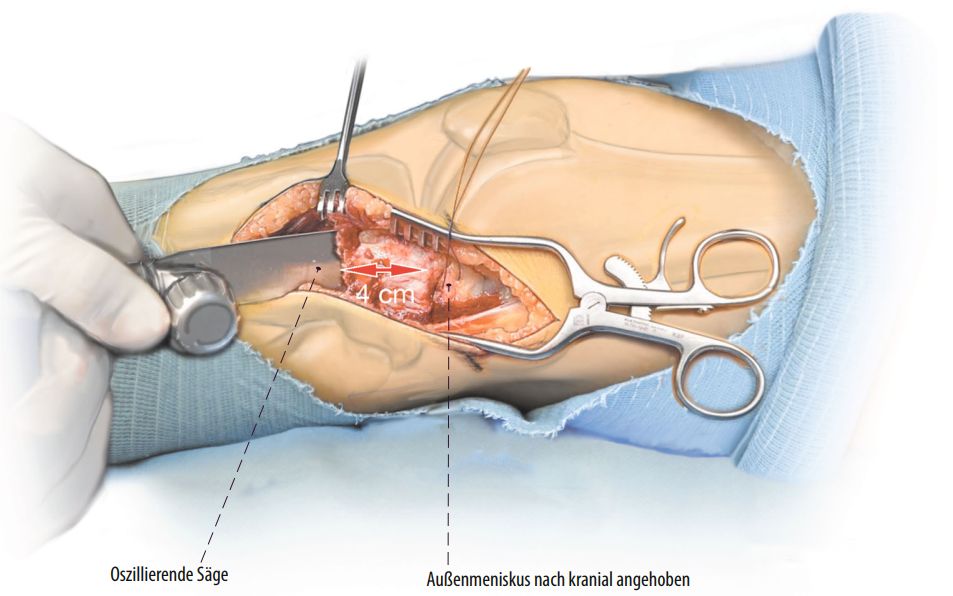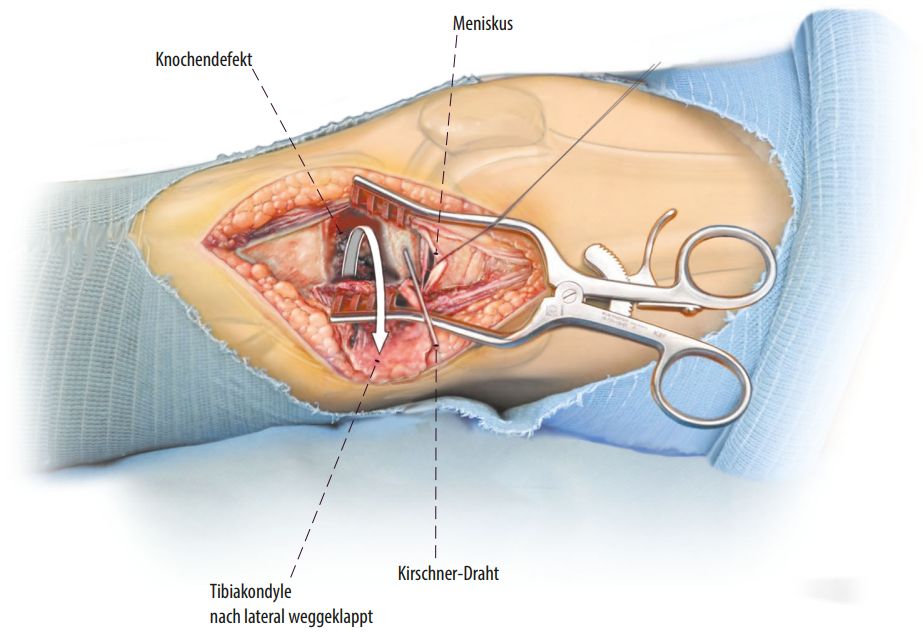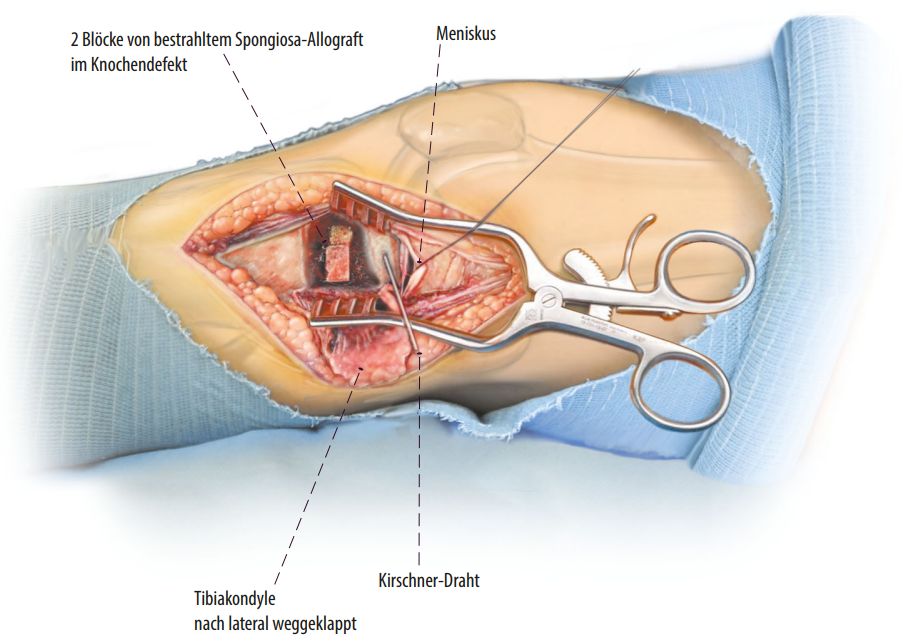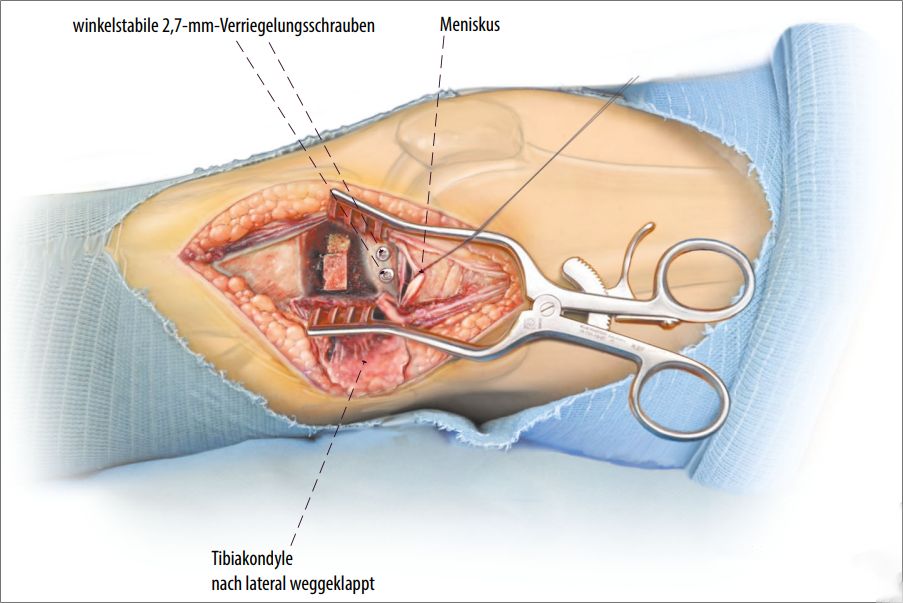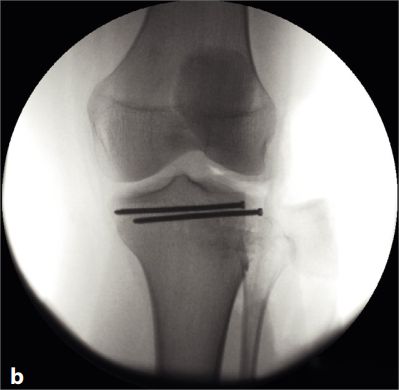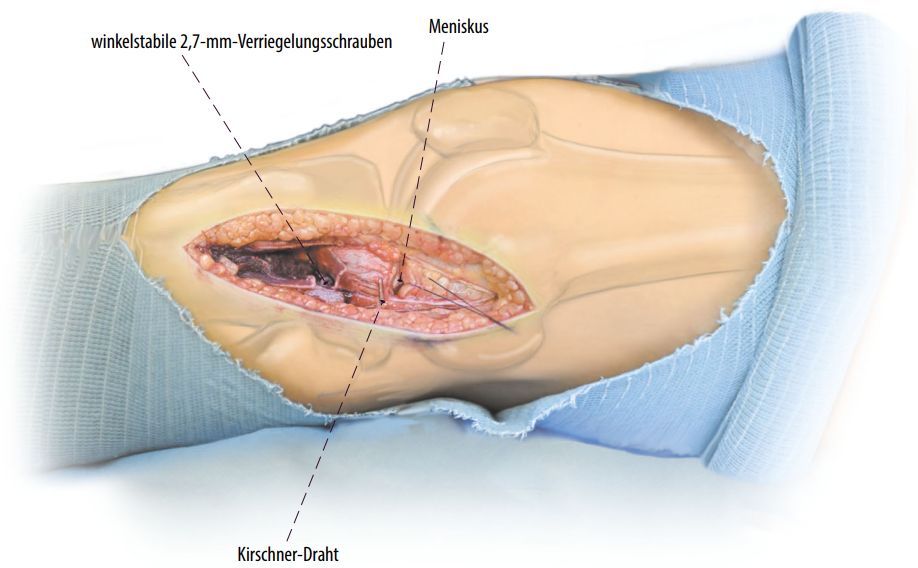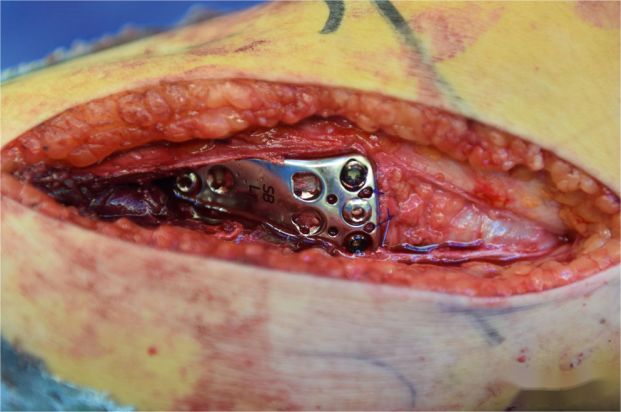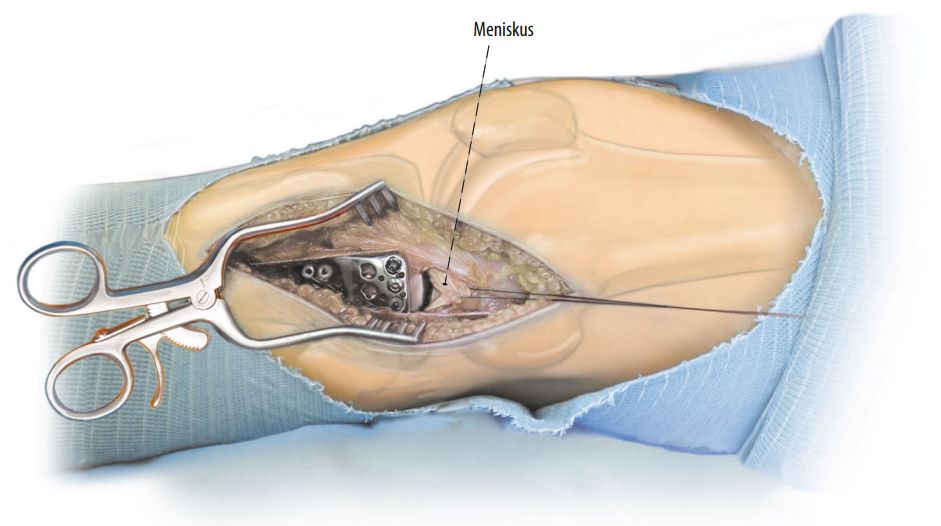The key to the treatment of Schatzker type II tibial plateau fractures is the reduction of the collapsed articular surface. Due to the occlusion of the lateral condyle, the anterolateral approach has limited exposure through the joint space. In the past, some scholars used anterolateral cortical fenestration and screw-rod reduction techniques to reset the collapsed articular surface. However, due to the difficulty in positioning the collapsed bone fragment, there are disadvantages in clinical application. Some scholars use the lateral condyle osteotomy, lift the bone block of the lateral condyle of the plateau as a whole to expose the collapsed articular surface of the bone under direct vision, and fix it with screws after reduction, achieving good results.
Operating procedure
1. Position: Supine position, classic anterolateral approach.
2. Lateral condyle osteotomy. Osteotomy was performed on the lateral condyle 4cm away from the platform, and the bone block of the lateral condyle was turned over to expose the compressed articular surface.
3. Reset fixed. The collapsed articular surface was reset, and two screws were attached to the articular cartilage for fixation, and the defect was implanted with artificial bone.
4. The steel plate is fixed exactly.
Post time: Jul-28-2023





